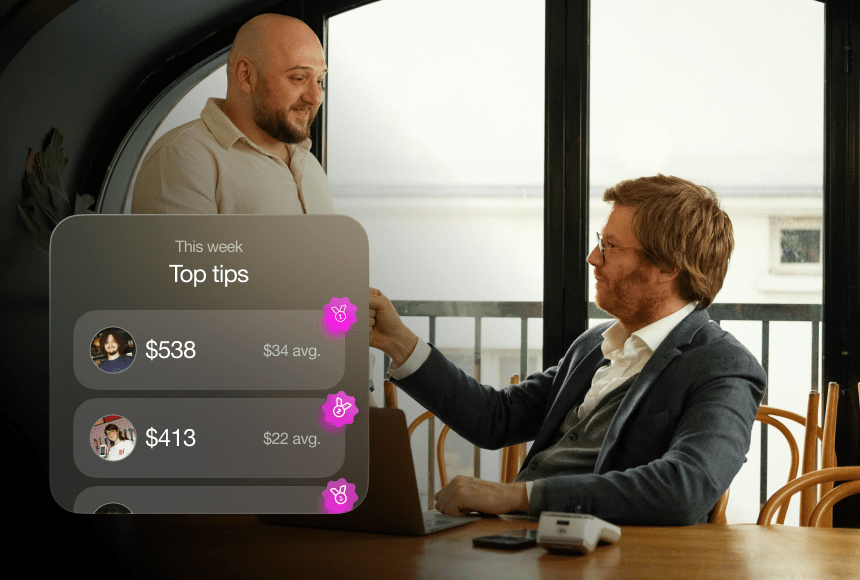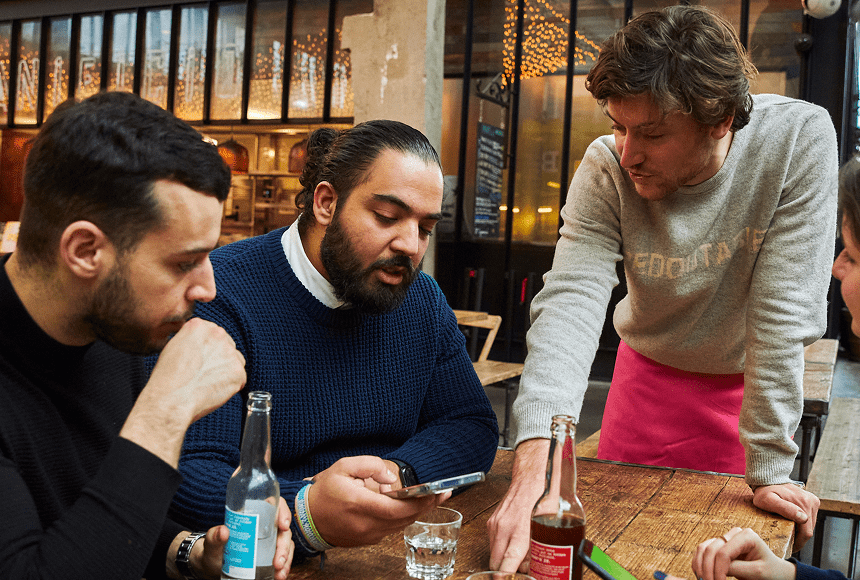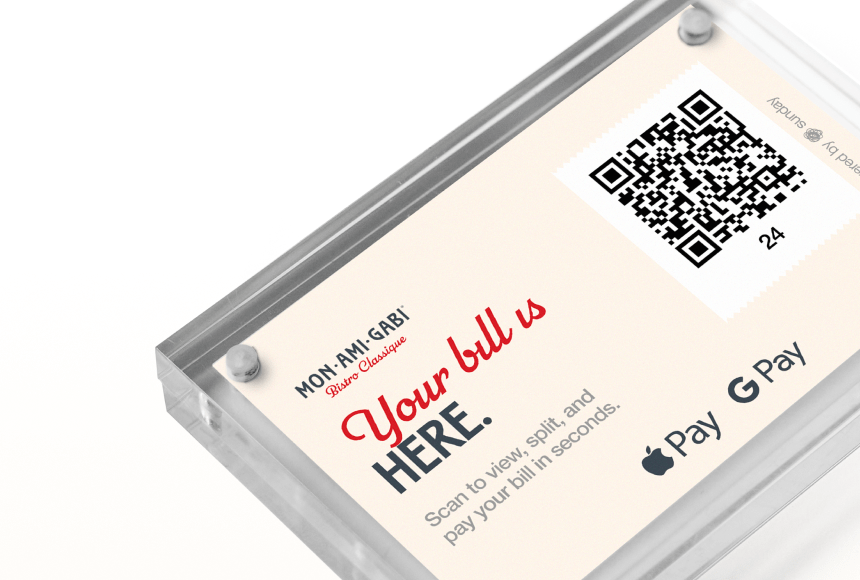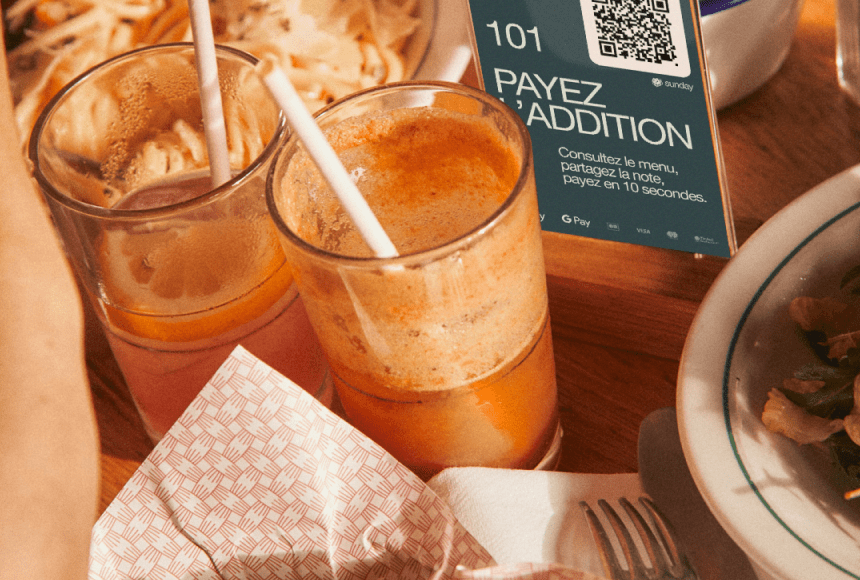
Eliminating the Table-Time Trap: Rethinking Your Payment Experience
The Real Cost of a Lingering Check
Picture this: your guests have enjoyed their meal, they’re happily chatting and savoring the last bite of dessert—until that moment comes when they’re ready to settle up. They look around for their server, but the payment process isn’t seamless. They start feeling impatient, or maybe they even flag down another staff member. All that effort to create a memorable dining experience could be overshadowed by a simple slowdown with the check.
This isn’t just about impatience. In a bustling restaurant environment, time truly is money. A delayed checkout disrupts table turnover, leaves other guests waiting, and can cause bottlenecks on a busy night. Some diners may skip dessert or coffee if they think it’ll take longer to pay. So, if your checkout process consistently causes friction, you may be losing revenue, diminishing guest satisfaction, and hurting your bottom line.
Understanding the Wait: Why the Check Feels So Long
Most restaurants follow a fairly traditional approach to payments: the server drops the check, heads off for a bit, comes back to collect the card or cash, and eventually returns with receipts. In many ways, it’s simple—but it also demands extra time and labor. Here’s where the frustration grows:
- Visibility Problem: Guests can’t always spot their server when they’re ready to pay. The experience becomes a guessing game of “Where is my check? Where is my server?”
- Server Juggling: Servers might be dealing with multiple tables, new orders, and additional tasks, meaning their bandwidth to keep track of each table’s readiness to pay can be stretched thin.
- Extra Trips: The traditional back-and-forth with the check folder or printed receipt requires several interactions. Multiply that by many tables, and inefficiencies add up.
- Guest Uncertainty: The final impression before guests walk out is shaped by how quickly and smoothly they can pay. When it’s slow, it can cast a shadow over what was otherwise a fantastic meal.
The Numbers Don’t Lie
Prompt payment is more than a passing convenience. Today’s diners—particularly in the United States—crave efficiency. According to a 2022 analysis by Toast (see more here), over 50% of surveyed diners said speed of service is a major factor in creating a positive experience. That final phase of the meal, the payment, is a decisive moment in the eyes of your guests. People want to complete their transaction without an endless wait to sign a slip.
Moreover, a study featured in QSR Magazine (QSR Magazine reference) highlighted that customers are more likely to become repeat guests if every step—from ordering to payment—flows without extended downtime. If they believe the restaurant respects their schedule, they’re often more inclined to order extra items, recommend the place to friends, or leave positive online reviews. In a climate where one negative experience can instantly appear on social media or review platforms, a frictionless checkout process becomes a powerful way to safeguard your reputation.
The Emotional Ripple Effect of a Delayed Check
We often think of dining experiences in purely practical terms—food quality, portion sizes, and ambiance. But let’s take a mental walk in your guests’ shoes. They come in excited, place their orders, enjoy a lovely conversation, and feel well taken care of. Then, after the meal, their forward momentum stalls while they wait to pay. The sense of closure slips away, and what remains is a subtle but real irritation.
Even the best restaurants can’t escape occasional slips in timing—life happens. But when it’s a pattern, the cumulative effect leads to a less enthusiastic “thank you” at the door and, potentially, a lower tip amount. Beyond finances, you could be missing out on word-of-mouth recommendations and that all-important repeat business. Think of it as a recipe for dissatisfaction: if your diners end the meal feeling ignored, they’ll be less likely to remember the wonderful starter or the perfectly cooked steak. They’ll remember the wait.
Fast Doesn’t Mean Rushed
Let’s address a classic misunderstanding: speed of payment is not about pushing guests out the door. It’s about removing the guesswork and friction from their final steps. A quick, user-friendly checkout shows you value their time, but it doesn’t have to turn the dining room into a high-pressure zone. Instead, it’s like a well-tuned kitchen. You want flavor without chaos, velocity without cutting corners.
When guests have a swift and simplified way to pay, they can linger on their own terms. You preserve that ambiance and hospitality while ensuring the practical side of the business runs smoothly. Think of it as a bakery that’s streamlined its line for coffee and pastries—people can still savor the aroma and enjoy the vibe, but they appreciate not having to wait long to place their order or make a payment.
How to Avoid the Frustration: Practical Strategies
Good news: a few targeted changes can transform the entire payment experience. Below are several strategies you can implement to make your checkout process as tasty as the rest of your menu:
- Empower Guests with QR Codes: Tools like sunday provide a unique QR code at each table, letting diners scan, pay seamlessly, leave a tip, and even post a quick Google review. No more waving for the server; guests can finalize their meal at their convenience.
- Mobile Payment Terminals: Instead of using a stationary cash register or making repeated trips between tables and the bar area, equip servers with portable payment terminals. This cuts down on travel time and keeps the process personal and flexible.
- Clear Table Signals: Some venues use small table flags or cards that guests can flip to indicate they’re ready for the check. It’s a thoughtful, low-tech way to alert servers.
- Train Your Team: Encourage servers to check in more regularly as diners approach the end of their meal. A well-timed conversation about dessert or after-dinner drinks offers a natural segue into presenting the checkout options.
- Staggered Seating and Scheduling: By seating guests in a more strategic way, you can reduce the chance that everyone requests the check at the same time.
- Automated Tip Splitting: One big reason the payment process gets delayed is splitting the bill among a group. Digital solutions that automatically compute each person’s share streamline this step and reduce awkward math.
Beyond Checkout: Turning the Last Moments into Opportunities
When you remove friction from the check process, you’re also opening the door to new possibilities. For instance, if guests can wrap up quickly, they can be more receptive to trying a final dessert or an after-dinner coffee. They know it won’t add confusion or 10 more minutes of waiting.
Additionally, a stress-free approach to the check can spark better feedback. Imagine a guest scanning a QR code, paying, and immediately rating the service or leaving a tip. The experience is fresh in their mind, so they’re more likely to deliver an authentic mention of what made the meal special. According to the National Restaurant Association (their research landing page), real-time engagement like this can be a goldmine for repeat business and a more robust online reputation.
Overcoming Resistance to Change
Some restaurant owners worry about how older diners might navigate new payment technologies or whether staff members will struggle to adapt. While these concerns are valid, real-world experience shows that intuitive tools quickly feel like second nature. A well-trained team can walk guests through the process in seconds, allowing even the most reluctant adopters to feel confident and safe using digital payment methods. It’s often just a matter of gentle education, a little repetition, and a friendly attitude from your servers.
Consider including simple instructions on the table, perhaps in the form of a small card or brochure. Keep it straightforward: “Scan the QR code to review your bill, pay securely, and share feedback, all without waiting!” When customers sense convenience, they’re usually open to giving it a try. The trust they place in you to deliver a smooth dining experience can extend to your payment technology as well.
The ROI of an Efficient Checkout
Saving a few minutes per table may not sound like a game-changer at first, but it adds up fast. Faster turnover lets you seat more parties during busy shifts. Reducing the wait keeps guests happier, which leads to stronger tips for your staff. And let’s not overlook spillover benefits, like a more relaxed environment for your frontline team. When your staff doesn’t need to constantly juggle checks during peak times, they can devote more attention to each table’s immediate needs—whether that’s an extra sauce on the side or a recommendation for a signature dish.
A streamlined dining experience also amplifies your brand’s reputation. People talk about efficient restaurants; they share those memorable experiences on social media, mention them in conversation with friends, and become regulars who look forward to returning. Efficiency becomes part of your venue’s identity—like a carefully created dish that balances flavors and leaves a great final taste.
In the same way you invest in quality ingredients for your menu, investing in payment technology or improved processes is a forward-focused move. Yes, it might require initial training or updates to your point-of-sale system, but the long-term impact on satisfaction and profitability can be substantial.
Case in Point: A Quick Scenario
Imagine you run a family-owned seafood grill that’s popular for its weekend clam chowder. Between noon and 2 p.m. on a Sunday, it’s packed. In the past, your servers had struggled to keep up with hydration refills, meal requests, ticket printing, and credit card runs. Guests lingered an extra 10 to 15 minutes just to finalize their checks. Some people skipped dessert to avoid the delay.
Then you introduced a combination of portable payment terminals and a QR code solution. Now, when guests finish their last bite, they can pay immediately from their seats if they’d like. Your servers make fewer back-and-forth trips, instead spending more time upselling your famous homemade pie. Within a month, you notice tables turning over faster, which means lunchtime traffic flows more evenly. Your staff is happier with fewer stress spikes, and tips have improved as well. Meanwhile, the number of positive online reviews has grown, specifically pointing out how smooth and pleasant the whole experience feels.
Keeping the Momentum Alive
It’s easy to focus on improving the check process in the short run, then slip back into old habits. To see lasting results, consider setting up regular staff check-ins, analyzing metrics like average table time, tip amounts, and the number of daily transactions. Identify patterns: Are there certain days or shifts where the payment flow needs more attention? Would rotating staff responsibilities help? Could you refine your approach to large groups versus couples?
Many restaurateurs also expand the concept of quick convenience to other elements of service. Pre-bussing tables to remove extra dishes, offering a mobile ordering option, and emailing digital receipts can all complement a faster checkout, rounding out an exceptional overall experience that customers will rave about. In this sense, swift payment is just one piece of the puzzle that keeps your dining room humming.
Making It Happen in Your Restaurant
You can begin by surveying your team: what are their biggest challenges with the current checkout system? If repeated back-and-forth trips are a problem, portable terminals might be your solution. If guests often need to split checks, consider a digital tool that streamlines that process. Next, gather feedback from regulars. Ask them casually: “Would you appreciate the option to pay by scanning a code at your table?” This input can guide you toward the right approach.
Of course, technology alone isn’t a magic wand. You still need well-trained servers and clear procedures. That’s why many successful restaurants view the payment upgrade as part of a broader customer experience transformation. They also update their staff on best practices, from greeting the table to suggesting dessert, so each interaction contributes to a positive, consistent brand message.
Where Do You Go from Here?
Try applying a small pilot program in one section of your dining room or during slower shifts. Once your team and your guests are comfortable, roll out the new checkout methods across the entire restaurant. Provide easy-to-understand signage—simple steps, warm language, and maybe even a playful nod to your culinary specialties. Let your guests know you’ve streamlined their experience because you value their time and want them to savor every moment rather than wait for the check.
Above all, remember that your payment process should mirror the hospitality you offer in every other aspect of your restaurant. You go to great lengths to source the best ingredients, craft delicious menus, and hire a welcoming staff. Why let the guest experience end on a frustrating note? By eliminating the table-time trap and embracing effective payment methods, you’re offering a complete, modern, and memorable dining journey that keeps your tables full and your reviews glowing.
Find out more today
Drop us your details below and we’ll reach out within the next 24h
Get the full, detailed picture.
sunday elevates your business with insightful data, instant feedback and precise analytics.




